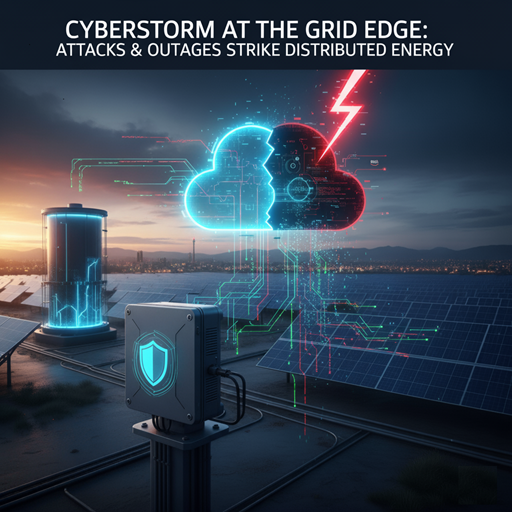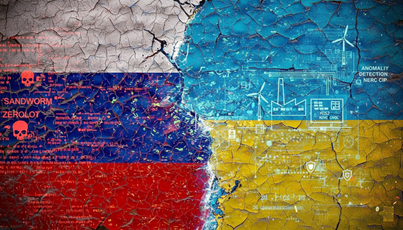Cybersecurity and Resilience at the Grid Edge: New Attacks & Outages Demand a Hardened Strategy
Security
The energy landscape is changing quickly. Thewidespread adoption of DERs and industrial microgrids isvital for resilience, but this decentralized model distributes risk. Recentcyber security intelligence shows a worrying trend: malicious actors - from sophisticated nation-state groups toransomware operators - are specifically targeting thecontrol systems and smart inverters at the grid's edge.
This is not a general warning; it is a call toaction based on concrete evidence of exploitation and newly discoveredvulnerabilities, compounded by the realities of public cloud dependence.
The Double Threat to DER Control Systems
Many of the modern smart inverters and DER Management Systems (DERMS) rely heavily on cloud services like AWS for centralized coordination.This exposes them to two distinct, critical risks:
1. Adversary Exploitation (Cyber Attack)
- The Cloud-Control Link: Modern smart inverters rely on centralized cloud backends for remote control. This cloud link acts as the single point of management for thousands of geographically dispersed devices, allowing utilities to remotely send high-level commands to maintain grid stability.
- Exploitable Backends & The "Botnet" Risk: Security research in 2025 exposed critical vulnerabilities (e.g., CVE-2025-36759 for sensitive info disclosure) in the cloud management services of major inverter vendors. Exploiting a single flaw in that backend can give an attacker the ability to control a massive fleet, executing a synchronized DDoS attack on the utility grid by abruptly manipulating power generation.
2. Cloud Service Disruption (Operational Failure)
- The AWS Outage Context: The massive AWS service disruption that occurred October 20, 2025, demonstrated the fragility of centralized infrastructure. The DNS resolution issue in the US-EAST-1 region led to cascading failures across thousands of applications worldwide.
- The Grid Implication: Any DERMS or microgrid control platform that relies on a single region of a major public cloud for real-time data processing, command routing, or user authentication is functionally vulnerable to the same kind of non-malicious operational failure. Loss of this central communication backbone can lead to:
- Loss of situational awareness (no real-time data from inverters).
- Inability to send control commands for grid stability (e.g., preventing brownouts).
- Loss of authentication for field engineers trying to take local control.
The CISA Perspective: Vulnerabilities in ControlHardware
Beyond the cloud, the physical devices on the gridremain under constant attack scrutiny. The risk is further underscored bycontinuous warnings from CISA, which regularly releases advisories forvulnerabilities in widely-used ICS from global vendors.
- Recent ICS Flaws: CISA advisories from September/October 2025 detail critical flaws in equipment frequently found within microgrid control cabinets, including Denial of Service (DoS) Flaws in products like Rockwell Automation's Stratix modules (CVE-2025-8007) and Buffer Overflows in software like Delta Electronics DIAScreen.
Argen Energy’s Resilience Focus
The transition to DER requires an operationalsecurity posture that assumes every component and every dependency is apotential entry point for both attackers and operational failure. At ArgenEnergy, we stress that effective resilience demands:
- Protocol-Aware Visibility & Anomaly Detection: Implementing continuous, deep monitoring that analyzes ICS traffic to establish a baseline of normal operation. This allows defenders to detect abnormal commands or unexpected communication that indicates a device is compromised, even during a public cloud disruption.
- Proactive Vulnerability Prioritization: Automatically mapping all field assets and their firmware versions against external threat intelligence and CISA advisories. This is essential for prioritizing immediate patching efforts where the risk is highest.
- Prioritized Isolation & Operational Independence: Mandating that critical, real-time control functions operate locally with guaranteed resilience even when the cloud backend is unreachable - whether due to a cyber attack or a massive AWS DNS resolution issue.
We must secure the grid where it is expanding - at the edge.



